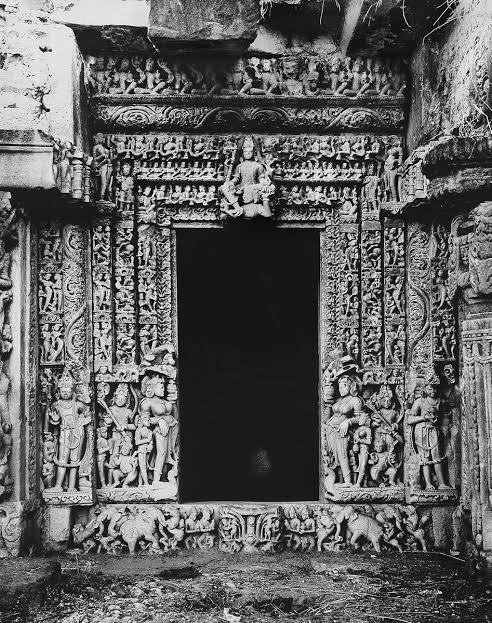 |
| Nagara Temple Doorway |
 |
| Lalatabimba |
This part of the doorway is called the Lalatabimba. A miniature form of the deity present inside the Garbagriha is depicted here.
 |
| Uttaranga |
On top of the Lalatabimba is an element what is known as Uttaranga. It is where usually Brahma, Vishnu, Maheshwara & sometimes even Skanda along with their respective devis are depicted.
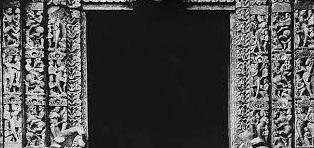 |
| Dwara Shaka |
Then comes Dwara Shakas. These are offsets surrounding the doorjamb . They are usually 1,3,5 or 7 in number. There are various types of Shakas depending on what is depicted. If it depicts lions, its called Simha shaka. Likewise there are Gandharva, Mituna & Patra(floral) shaka.
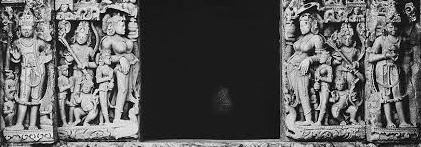 |
| Dwarapala |
Then we have the Dwarapalas guarding the Garbagriha on either side of the doorway. It could be Jaya - Vijaya, Ganga-Yamuna depending on the principal deity inside the Garbagriha.
 |
| Mandaraka |
This element is called the Mandaraka. The name comes from the Mandara mountain which was used during the Samudra manthan to obtain Amrutha. Sometimes the event is depicted here.
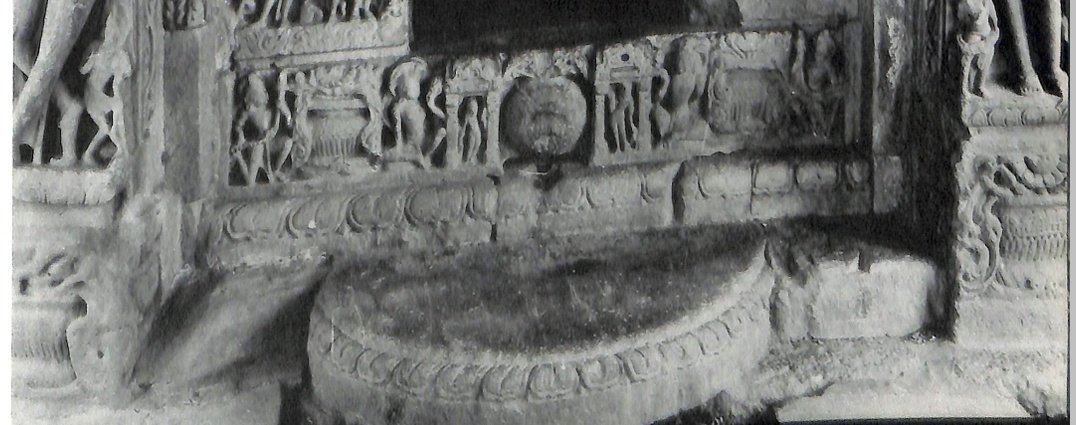 |
| Udumbara |
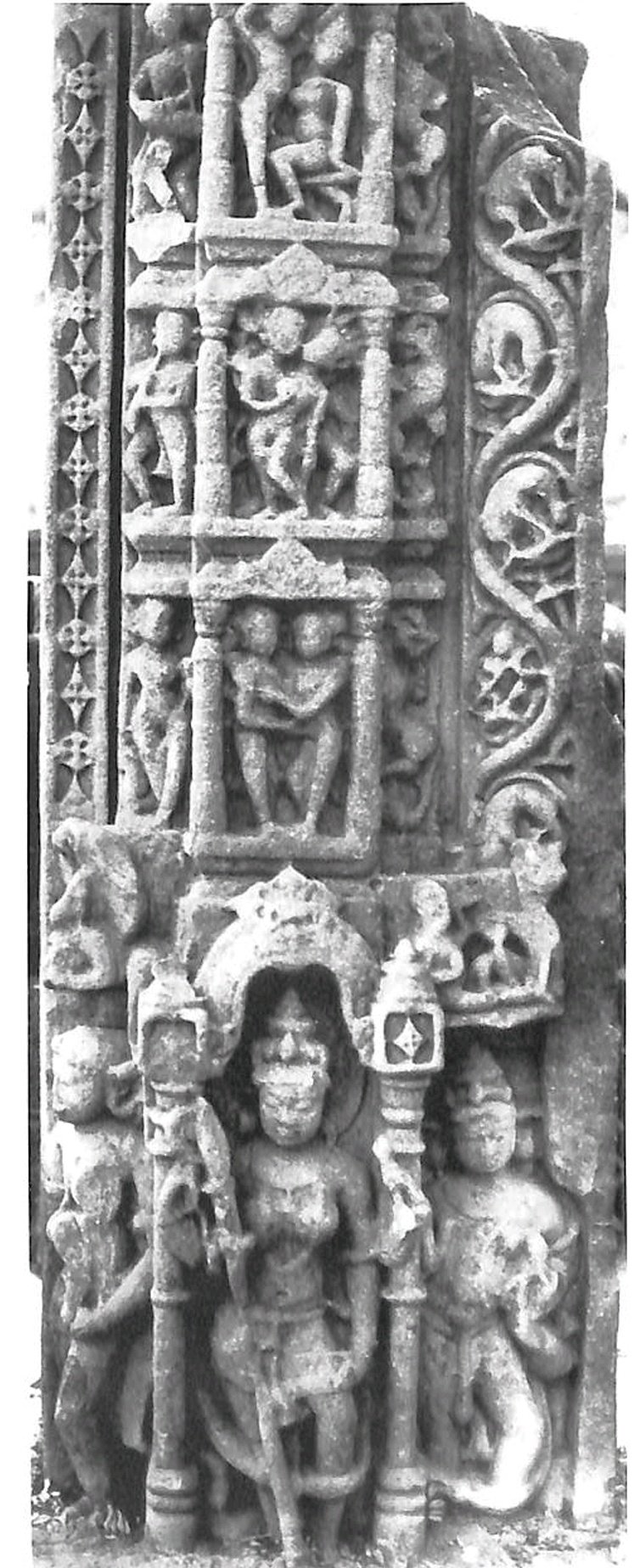 |
| Mithuna Shaka |
An excellent example of Mithuna Shaka from Ashapuri Temple. Nagara architecture reached its peak crescendo in Madhya Pradesh area. The development of architecture came to an abrupt end following the invasions. Sadly we'll never know to what newer heights it would have reached.
Vishvanatha temple, Khajuraho. Under the patronage of the Chandelas of Jejakabhukti, Nagara architecture reached its very peak. Especially the gateway elements leading up to the Garbagriha. Just have a look at each element. So intricate, aesthetic, classy & so graceful.
Have written another post on "Structural elements of a Pallava monolithic rock cut Ratha type Temple" that can be read HERE
REFERENCE
Encyclopedia of Hindu Temple Architecture by MA Dhaky
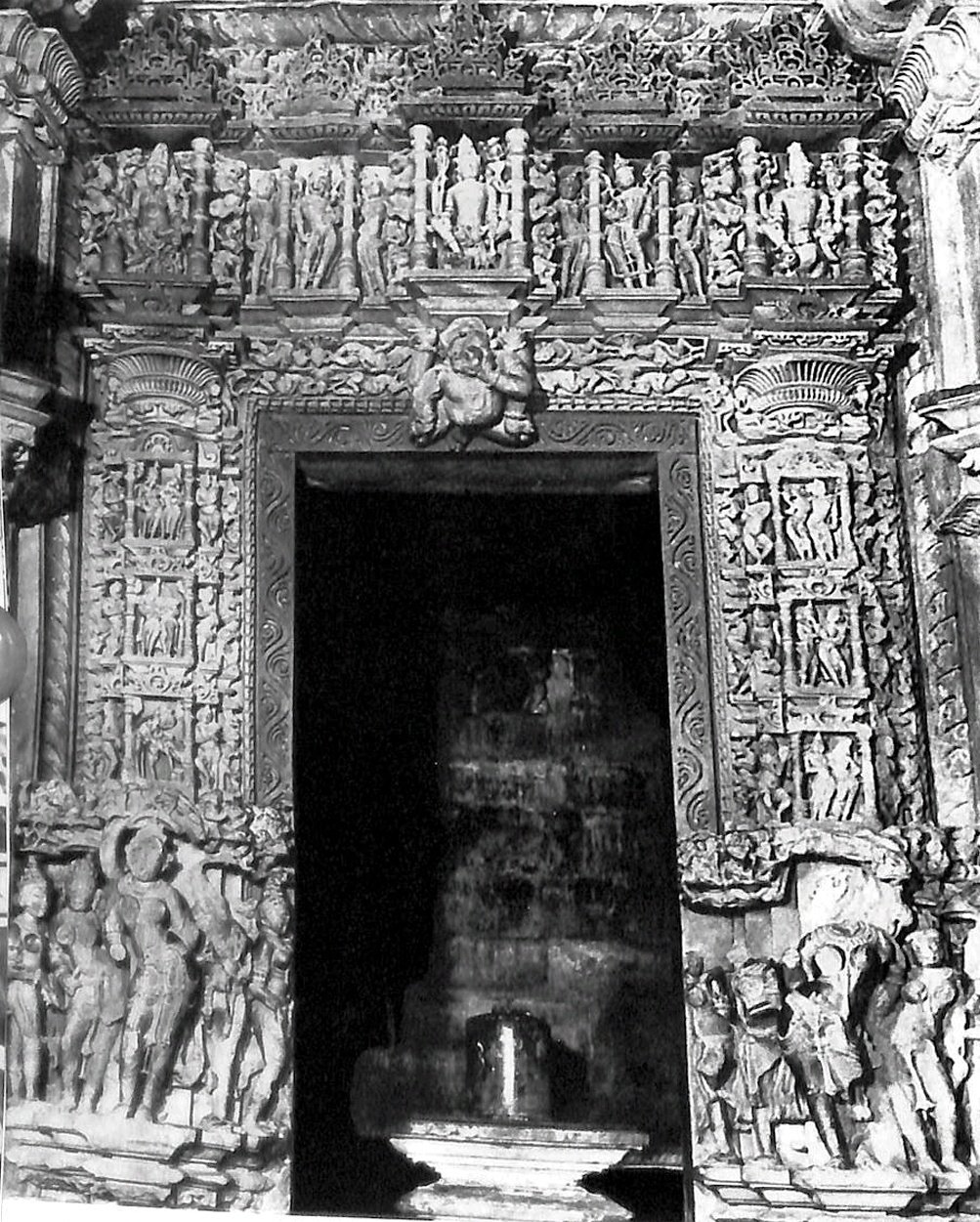






No comments:
Post a Comment